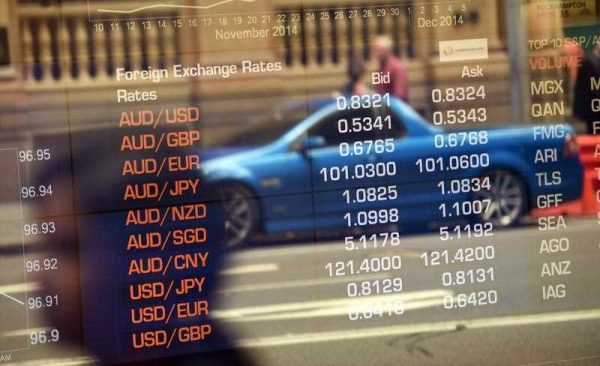Glenn Stevens, governor of Australia’s central bank, has frequently commented on the need for the Australian dollar to devalue. In a recent interview he remarked that ‘a year ago I said probably 85 US cents was better than 95. And if I had to pick a figure now, I would say probably 75 is better than 85’.
Modelling conducted by Victoria University’s Centre of Policy Studies concurs with Stevens’ view, finding that over a period of several years the Australian dollar will need to fall to around 70 US cents.
After trading above 90 US cents for most of 2014, the dollar’s significant depreciation in the last four months has alleviated fears that it would remain stubbornly high. By the end of 2014, it had fallen to below 82 US cents.
Commodity prices on world markets are falling, driving the need for devaluation. Lower prices for important Australian exports such as iron ore and coal will lead to an expected fall in the terms of trade of around 20 per cent from its mid-2014 level. The timing of this fall is difficult to predict. The federal government’s latest outlook suggests that it will be achieved almost entirely by mid-2016, with the bulk of the fall occurring by the middle of 2015. Earlier projections had anticipated a slower fall.
Either way, real devaluation will be a necessary ingredient for an orderly adjustment to the end of the mining boom.
Why does the dollar ‘need’ to fall, and by how much? We can quantify this ‘need’ for devaluation by considering, with the aid of an economic model, the consequences of a persistently high exchange rate. Modelling at CoPS suggests that if the dollar was overvalued by 10 per cent in two years’ time the unemployment rate could climb to over 12 per cent, up from 6.3 per cent in November 2014.
This worrying result is based on several assumptions. Most notably, it supposes that the overvalued nominal exchange rate would not be compensated by real devaluation (through internal price adjustment). Consistent with recent history, the modelling assumes weak but positive growth in nominal wages of above zero but less than inflation— that is, a fall in real wages. With positive (albeit weak) growth in nominal wages and an overvalued currency, Australia’s competitiveness would suffer. GDP growth would stall and real per capita GNP would go backwards by 5 per cent over two years.
Another important assumption is that multifactor productivity grows slowly (after taking into account capital coming on stream from various major mining projects). Again, this is consistent with recent history in both Australia and other developed economies. Some observers may be more optimistic about productivity, but the modelling shows that higher productivity won’t help employment in the presence of an overvalued exchange rate.
Higher productivity coupled with wage restraint would certainly improve the GDP outcome. But productivity growth is not the antidote for an overvalued exchange rate. The balance of trade would be strongly constrained by the overvalued exchange rate, limiting the opportunities for GDP to grow more strongly. Demand would not increase sufficiently to absorb all of the extra GDP that could have been produced because of higher productivity. As a result, the unemployment rate would still increase to at least 12 per cent.
Throughout 2014, Australia’s unemployment rate crept upwards. At the same time, growth in real wages was non-existent, illustrating that with a persistently high exchange rate, some internal adjustment is possible.
But there is more to come, and internal adjustment alone will not be sufficient to maintain Australia’s competitiveness. World commodity prices are falling, but they are still at historically high levels. The dollar has passed Stevens’ first milestone of 85 US cents, but it will need to fall to 75 and beyond as Australia’s decade-long terms of trade bonanza draws to a close.
Janine Dixon is a Senior Research Fellow at the Centre of Policy Studies, Victoria University.

